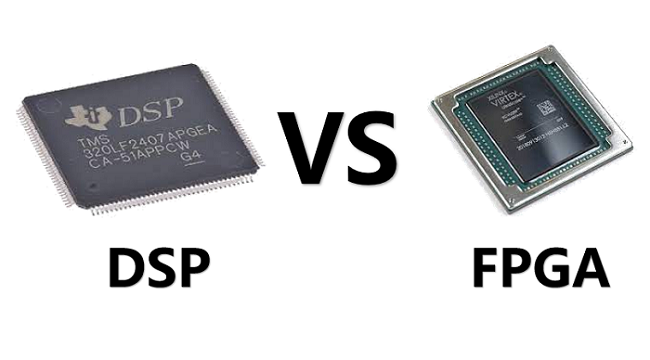
What are the differences between FPGA and DSP processors for signal processing?
Global electronic component supplier AMPHEO PTY LTD: Rich inventory for one-stop shopping. Inquire easily, and receive fast, customized solutions and quotes.
FPGA (Field Programmable Gate Array) and DSP (Digital Signal Processor) are both used for signal processing, but they differ significantly in architecture, use cases, performance characteristics, and development complexity. Here's a breakdown of the key differences:

1. Architecture
-
FPGA:
-
Hardware-based reconfigurable logic.
-
Consists of logic blocks, flip-flops, routing fabric, and sometimes dedicated DSP slices.
-
Allows massive parallelism by creating custom hardware paths.
-
-
DSP Processor:
-
A specialized microprocessor optimized for mathematical operations (e.g., MAC—Multiply-Accumulate).
-
Executes sequential instructions like a CPU but optimized for signal processing.
-
2. Performance and Parallelism
-
FPGA:
-
Supports true parallel execution of multiple operations.
-
Excellent for high-throughput, low-latency processing (e.g., real-time video/audio, SDR).
-
-
DSP:
-
Executes instructions sequentially (though some support limited parallelism via SIMD or VLIW).
-
Best for medium-speed, real-time processing with simpler development.
-
3. Flexibility and Development
-
FPGA:
-
Requires HDL programming (Verilog/VHDL) or HLS (High-Level Synthesis).
-
Offers full control over timing, architecture, and data paths.
-
Development and debugging are more complex.
-
-
DSP:
-
Easier to program using C/C++ or assembly.
-
Ideal for developers familiar with software programming.
-
Faster time to market for typical DSP tasks.
-
4. Application Suitability
| Task | Better Option |
|---|---|
| Real-time video/image processing | FPGA |
| Audio filtering (low-to-mid complexity) | DSP |
| High-speed communications (e.g., 5G) | FPGA |
| Control systems and adaptive filtering | DSP |
| Custom protocols (e.g., LVDS, PCIe) | FPGA |
5. Power Consumption
-
FPGA:
-
Generally higher power consumption, especially for high-speed tasks.
-
-
DSP:
-
More power-efficient for specific algorithmic processing.
-
6. Cost and Scalability
-
FPGA:
-
Higher upfront cost and complexity.
-
Scalable and customizable for volume production.
-
-
DSP:
-
Lower NRE (non-recurring engineering) cost.
-
Cost-effective for small to medium volume applications.
-
7. Learning Curve
-
FPGA: Steep learning curve due to hardware design.
-
DSP: Easier for developers with a software background.
Summary Table
| Feature | FPGA | DSP Processor |
|---|---|---|
| Programming | HDL (Verilog/VHDL), HLS | C/C++ or Assembly |
| Parallelism | High (custom hardware parallelism) | Limited (sequential with some SIMD) |
| Latency | Very low | Moderate |
| Flexibility | Very high | Limited to processor architecture |
| Development time | Longer | Shorter |
| Cost | Higher | Lower |
| Power efficiency | Moderate to high (varies) | Generally better |
Conclusion
-
Choose FPGA if you need high performance, low latency, and hardware-level customization.
-
Choose DSP if you want faster development, lower cost, and simpler integration for moderately complex signal processing.
Related Articles
- ·Digital Signal Processors vs x86 Architecture, What's the Different?
- ·How to become an FPGA engineer? Which FPGA board and program are suitable for beginners?
- ·How to Generate Low Clock Frequencies in FPGA?
- ·How to Use DDR Memory with FPGA for DSP Application?
- ·Application of Embedded Systems in Aerospace and Defense Fields
- ·Comparison of FPGA, ARM, STM32, and DSP Platforms
- ·Comparison of FPGA, CPLD, PLC, Microprocessor, Microcontroller & DSP
- ·What is the difference between SoC, FPGA, and ASIC?
- ·The composition, functions, advantages, and disadvantages of FPGA
